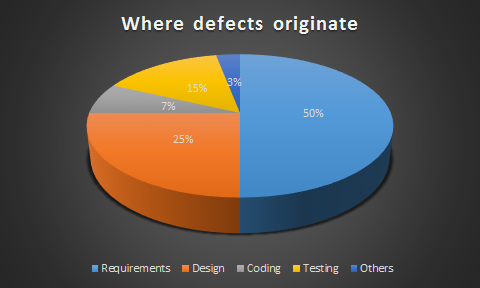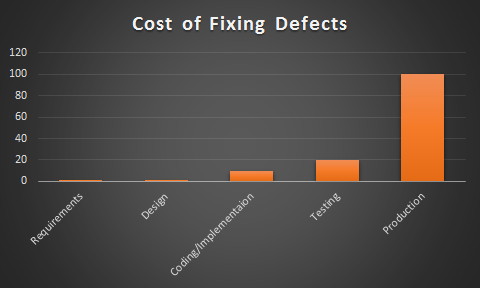What do you mean by Economies of Software testing?
Why software defects are costly to find and fix?
How early defect detection can save much cost in fixing defects?
There is a definite economic impact of software testing. One economic impact is from the cost of defects and the another is the way we perform testing. Cost of defect is a very real and very tangible cost. The second point the way we perform testing will not consider it now.
Where defects originate?

One of the most commonly understood facts about defects is that most defects originate in the requirements definition phase of a project. The next runner-up is the design phase.
Some problems in getting accurate, clear, and testable requirements are:
- Many people do not have a solid requirements gathering process
- Few people have been trained in or understand the dynamics of requirements
- Projects, people, and the world around us change very quickly
- The English language is ambiguous and even what we consider clear language can be interpreted differently by different people.
Where testing resources are used?
In the previous section we saw that most defects originate in requirements and design, but most of the testing effort occurs in a traditional “testing” phase toward the end of the project. The problem with the big bang approach to testing is that defects are not found until toward the end of the project. This is the most costly and risky time to fix defects. Some complex defects may even be impossible to fix.
Relative cost of fixing defects
One of the known facts about software defects is that the longer they go undetected, the more expensive they are to fix. Although research differs on the exact ratios, the general rule is 1:10:100. That is, if a defect costs one unit (hour, dollar, etc.) to fix in requirements and design, it costs 10 units to fix in testing (system/acceptance) and over 100 times to fix in production. The cosThis cost of defects doesn’t even take into account the impact cost of defects. These t of fixing in production may be even higher than 100 times. Costs could be attributed to lost revenue, reimbursements, fraud, lost customers, bad public relations, and litigation.

Conclusion
- Most defects are created in the early stages of a project
- Most defects are found in the later stages of a project
- It costs 10 to 100 times as much to fix a defect in the later phases of a project.
So, what does all of this mean? The main conclusion is that most people perform testing too late in the process. These people wonder why testing is so expensive and why their projects are often over budget.
If you really want to make your testing more efficient and reduce the overall cost of testing and defects, test early in the project and continue testing throughout the project.
